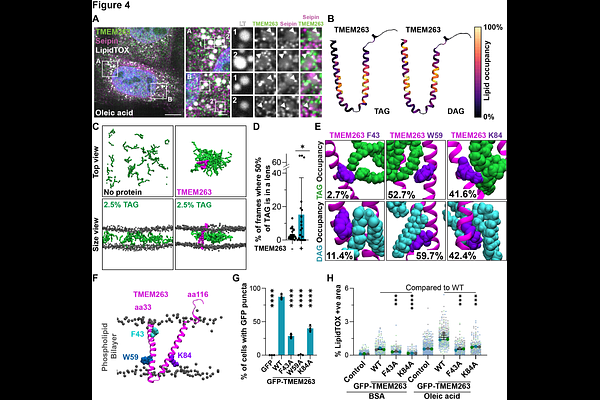The growth-promoting protein TMEM263 is an ER resident that controls early stages of lipid droplet biogenesis

The growth-promoting protein TMEM263 is an ER resident that controls early stages of lipid droplet biogenesis
Yalci, K.; Chala, N.; Moss, J.; Zakrzewski, P.; Sevil, R.; Willoughby, L.; Wonklyn, S.; Andrews, T.; Hammond, C. L.; Corey, R. A.; Carroll, B.
AbstractCell and organismal growth is controlled not only by the availability of nutrients, but also the ability to dynamically sense and respond to changes in metabolic demand. We have identified a protein, TMEM263 (also known as C12orf23) as a new mechanistic link between growth and lipid metabolism. TMEM263 was discovered in a screen as an ER-resident protein, and we have characterised its role as both necessary and sufficient for lipid droplet formation. TMEM263 has two transmembrane domains that fold into a hairpin structure which are essential for its localisation to the ER and to lipid droplets. Functionally, we propose that TMEM263 can interact with and support the condensation of neutral lipids in a bilayer to promote lipid droplet formation and growth. Consistently, loss of TMEM263 in cells and in zebrafish significantly impairs lipid droplet formation. Loss of TMEM263 protein function in vivo is associated with organismal growth defects and proportional dwarfism and our study provides a mechanistic understanding linking these phenotypes to impaired lipid droplet biology.